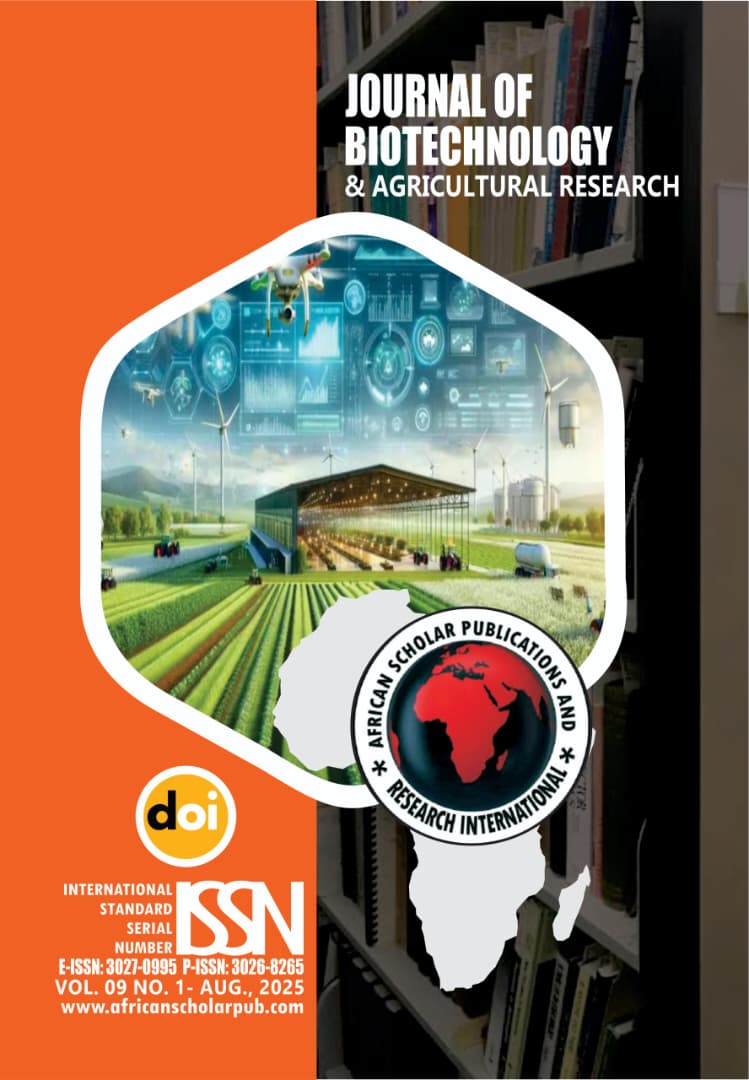Prediction of Body Weight on the Basis of Morphometric Traits in Juvenile Tortoise (Pelusios casteneus) Breeds in Rainforest Ecological Zone, Nigeria
Abstract
Predicting a tortoise’s body weight based on morphometric traits is possible through statistical analysis. The study was designed to provide information on body weight and morphometric traits relationships of juvenile tortoises in rainforest ecological zone of Nigeria. The research was conducted at the Department of Animal Production Research Farm (DAPRF), Southern Delta University (SDU), Ozoro. The interrelationships between morphometric traits of One hundred and twenty (120) tortoises of both sexes were studied using correlation and regression analyses of SPSS package. The result showed that body weight (BWT) was positively and significantly (P<0.05) correlated with all morphometric traits. Straight carapace length (SCL), straight plastron length (SPL) and Carapace circumference (CC) appeared to be the traits that could be used to predict BWT with high level of accuracy in male and female juvenile tortoises studied with R2 value of 0.34 and 0.63, respectively. Comparatively, males showed higher values (P<0.01) than females in terms of body weight and all aspect of morphometric traits. The coefficient of variation (C.V) confirmed these results, with male juvenile being the most reliable (C.V. =7.18%) and female juvenile had the least stable (C.V.= 8.30%) for BWT. Highly significant (P<0.01) correlations were observed between BWT and SCL; BWT and SPL, and BWT and SPW in male and BWT and CC; BWT and SCW in female. In conclusion, it is therefore recommended to use linear regression techniques based on CC and SPL in both sexes.
Keywords:
Juvenile, Carapace, Plastron, Morphometric traits, body weight, predictionDownloads
Downloads
ACCESSES
Published
Issue
Section
License
Copyright (c) 2025 Kperegbeyi, J. I., Onwumere-Idolor, S. O., Okhale, O. E. (Author)

This work is licensed under a Creative Commons Attribution 4.0 International License.















